Jet Electrochemical Micromachining of Micro-Grooves with Conductive-Masked Porous Cathode
Abstract
:1. Instruction
2. Description of the Method and Numerical Simulation
2.1. Description of the Method
2.2. Numerical Simulation
2.2.1. Model Building
- The reaction surface of porous cathode is considered as a solid flat surface, ignoring the internal porous structure.
- The potential loss due to the electrochemical reaction is ignored, and Ohm’s law and charge balance are used to calculate the current in the electrolyte and electrode.
- The conductivity of the electrolyte, σ, is constant.
- The concentration gradient in the bulk electrolyte is negligible.
2.2.2. Simulation Results
3. Experimental
4. Results and Discussion
4.1. Comparison of Micro-Grooves Generated with Conductive and Insulated Mask
4.2. Micro-Grooves Generated with Different Electrolyte Pressures
4.3. Micro-Grooves Generated with Different Pulse Duty Cycles
5. Conclusions
- The simulation results indicated that the use of a conductive mask reduced the electric field intensity on both sides of the micro-groove and achieved the purpose of reduction in overcut.
- On comparing the results with an insulated mask and a conductive mask to fabricate micro-grooves with the same depth of 45 μm, it was observed that the etch factor was increased from 0.75 (insulated mask) to 3.3 (conductive mask), which showed that the machining localization of micro-grooves was enhanced.
- In this process scheme, a high electrolyte pressure was favorable for the renewal of the electrolyte and enhanced mass transfer during processing, which improved the machining quality and dimensional uniformity of the micro-grooves.
- The pulse duty cycle has an important effect on the machining localization. A low pulse duty cycle of 20% could obtain micro-grooves with better machining localization and surface quality.
Author Contributions
Funding
Conflicts of Interest
References
- Uhlmann, E.; Mullany, B.; Biermann, D.; Rajurkar, K.P.; Hausotte, T.; Brinksmeier, E. Process chains for high-precision components with micro-scale features. CIRP Ann. Manuf. Technol. 2016, 65, 549–572. [Google Scholar] [CrossRef]
- Bruzzone, A.A.G.; Costa, H.L.; Lonardo, P.M.; Lucca, D.A. Advances in engineered surfaces for functional performance. CIRP Ann. Manuf. Technol. 2008, 57, 750–769. [Google Scholar] [CrossRef]
- Fontana, É.; Mancusi, E.; da Silva, A.; Mariani, V.C.; Ulson de Souza, A.A.; Ulson de Souza, S.M.A.G. Study of the effects of flow channel with non-uniform cross-sectional area on PEMFC species and heat transfer. Int. J. Heat Mass Transf. 2011, 54, 4462–4472. [Google Scholar] [CrossRef]
- Bozorgnezhad, A.; Shams, M.; Kanani, H.; Hasheminasab, M.; Ahmadi, G. The experimental study of water management in the cathode channel of single-serpentine transparent proton exchange membrane fuel cell by direct visualization. Int. J. Hydrog. Energy 2015, 40, 2808–2832. [Google Scholar] [CrossRef]
- Mishra, S.K.; Ghosh, S.; Aravindan, S. Characterization and machining performance of laser-textured chevron shaped tools coated with AlTiN and AlCrN coatings. Surf. Coat. Technol. 2018, 334, 344–356. [Google Scholar] [CrossRef]
- da Silva, W.M.; Suarez, M.P.; Machado, A.R.; Costa, H.L. Effect of laser surface modification on the micro-abrasive wear resistance of coated cemented carbide tools. Wear 2013, 302, 1230–1240. [Google Scholar] [CrossRef]
- Xiang, G.; Han, Y.; Wang, J.; Xiao, K.; Li, J. A transient hydrodynamic lubrication comparative analysis for misaligned micro-grooved bearing considering axial reciprocating movement of shaft. Tribol. Int. 2019, 132, 11–23. [Google Scholar] [CrossRef]
- Chang, D.Y.; Shen, P.C.; Hung, J.C.; Lee, S.J.; Tsui, H.P. Process Simulation–Assisted Fabricating Micro-Herringbone Grooves for a Hydrodynamic Bearing in Electrochemical Micromachining. Mater. Manuf. Process. 2011, 26, 1451–1458. [Google Scholar] [CrossRef]
- Shamoto, E.; Saito, A. A novel deep groove machining method utilizing variablepitch end mill with feed-directional thin support. Precis. Eng. 2016, 43, 277–284. [Google Scholar] [CrossRef]
- Schreck, S.; Zum, G.K.H. Laser-assisted structuring of ceramic and steel surfaces for improving tribological properties. Appl. Surf. Sci. 2005, 247, 616–622. [Google Scholar] [CrossRef]
- Hung, J.C.; Chang, D.H.; Chuang, Y. The fabrication of high-aspect-ratio microflow channels on metallic bipolar plates using die-sinking micro-electrical discharge machining. J. Power Sources 2012, 198, 158–163. [Google Scholar] [CrossRef]
- Saxena, K.K.; Qian, J.; Reynaerts, D. A review on process capabilities of electrochemical micromachining and its hybrid variants. Int. J. Mach. Tools Manuf. 2018, 127, 28–56. [Google Scholar] [CrossRef]
- Fang, X.; Wang, X.; Wang, W.; Qu, N.; Li, H. Electrochemical drilling of multiple small holes with optimized electrolyte dividing manifolds. J. Mater. Process. Technol. 2017, 247, 40–47. [Google Scholar] [CrossRef]
- Natsu, W.; Ikeda, T.; Kunieda, M. Generating complicated surface with electrolyte jet machining. Precis. Eng. 2007, 31, 33–39. [Google Scholar] [CrossRef]
- Hackert-Oschätzchen, M.; Meichsner, G.; Zinecker, M.; Martin, A.; Schubert, A. Micro machining with continuous electrolytic free jet. Precis. Eng. 2012, 36, 612–619. [Google Scholar] [CrossRef]
- Mitchell-Smith, J.; Speidel, A.; Clare, A.T. Advancing electrochemical jet methods through manipulation of the angle of address. J. Mater. Process. Technol. 2018, 255, 364–372. [Google Scholar] [CrossRef]
- Mitchell-Smith, J.; Speidel, A.; Gaskell, J.; Clare, A.T. Energy distribution modulation by mechanical design for electrochemical jet processing techniques. Int. J. Mach. Tools Manuf. 2017, 122, 32–46. [Google Scholar] [CrossRef]
- Ikeda, T.; Natsu, W.; Kunieda, M. Electrolyte jet machining using multiple nozzles. Int. J. Electr. Mach. 2006, 11, 25–32. [Google Scholar] [CrossRef]
- Hao, X.; Wang, L.; Wang, D.; Guo, F.; Tang, Y.; Ding, Y.; Lu, B. Surface micro-texturing of metallic cylindrical surface with proximity rolling-exposure lithography and electrochemical micromachining. Appl. Surf. Sci. 2011, 257, 8906–8911. [Google Scholar] [CrossRef]
- Zhou, X.; Qu, N.; Hou, Z.; Zhao, G. Electrochemical micromachining of microgroove arrays on phosphor bronze surface for improving the tribological performance. Chin. J. Aeronaut. 2018, 31, 1609–1618. [Google Scholar] [CrossRef]
- Zhu, D.; Qu, N.S.; Li, H.S.; Zeng, Y.B.; Li, D.L.; Qian, S.Q. Electrochemical micromachining of microstructures of micro hole and dimple array. Cirp Ann. Manuf. Technol. 2009, 58, 177–180. [Google Scholar] [CrossRef]
- Qu, N.S.; Zhang, X.F.; Chen, X.L.; Li, H.S.; Zhu, D. Modified microscale pattern transfer without photolithography of substrates. J. Mater. Process. Technol. 2015, 218, 71–79. [Google Scholar] [CrossRef]
- Wang, Z.; Qian, S.; Cao, H.; Zhang, H.; Bao, K. Simulation and Analysis on Machining Channels in the Electrochemical Pattern Transfer Method. Int. J. Electrochem. Sci. 2016, 11, 6126–6137. [Google Scholar] [CrossRef]
- Zhang, X.; Qu, N.; Chen, X. Sandwich-like electrochemical micromachining of micro-dimples. Surf. Coat. Technol. 2016, 302, 438–447. [Google Scholar] [CrossRef]
- Zhang, X.; Qu, N.; Fang, X. Sandwich-like electrochemical micromachining of micro-dimples using a porous metal cathode. Surf. Coat. Technol. 2017, 311, 357–364. [Google Scholar] [CrossRef]
- Ming, P.; Zhao, C.; Zhang, X.; Li, X.; Qin, G.; Yan, L. Investigation of foamed cathode through-mask electrochemical micromachining developed for uniform texturing on metallic cylindrical surface. Int. J. Adv. Manuf. Technol. 2018, 96, 3043–3056. [Google Scholar] [CrossRef]
- Chen, X.; Qu, N.; Li, H. Improvement of dimensional uniformity on micro-dimple arrays generated by electrochemical micro-machining with an auxiliary electrode. Int. J. Adv. Manuf. Technol. 2015, 80, 1577–1585. [Google Scholar] [CrossRef]
- Chen, X.L.; Dong, B.Y.; Zhang, C.Y.; Wu, M.; Guo, Z.N. Jet electrochemical machining of micro dimples with conductive mask. J. Mater. Process. Technol. 2018, 257, 101–111. [Google Scholar] [CrossRef]
- Chen, X.L.; Fan, G.C.; Lin, C.H.; Dong, B.Y.; Guo, Z.N.; Fang, X.L.; Qu, N.S. Investigation on the electrochemical machining of micro groove using masked porous cathode. J. Mater. Process. Technol. 2020, 276, 116406. [Google Scholar] [CrossRef]
- Wang, D.; Zhu, Z.; Bao, J.; Zhu, D. Reduction of stray corrosion by using iron coating in NaNO3 solution during electrochemical machining. Int. J. Adv. Manuf. Technol. 2015, 76, 1365–1370. [Google Scholar] [CrossRef]
- Fang, X.; Qu, N.; Zhang, Y.; Xu, Z.; Zhu, D. Effects of pulsating electrolyte flow in electrochemical machining. J. Mater. Process. Technol. 2014, 214, 36–43. [Google Scholar] [CrossRef]
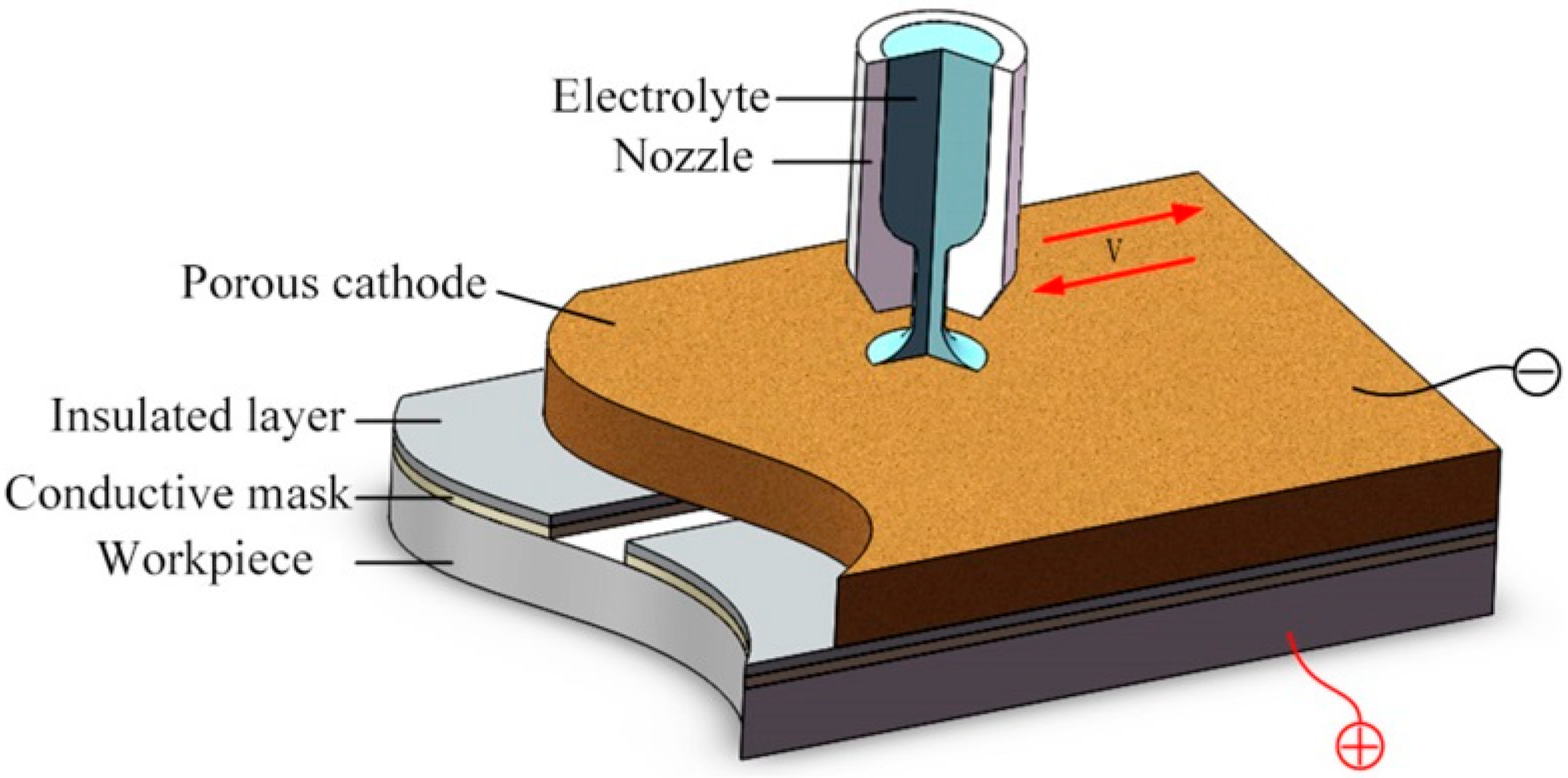


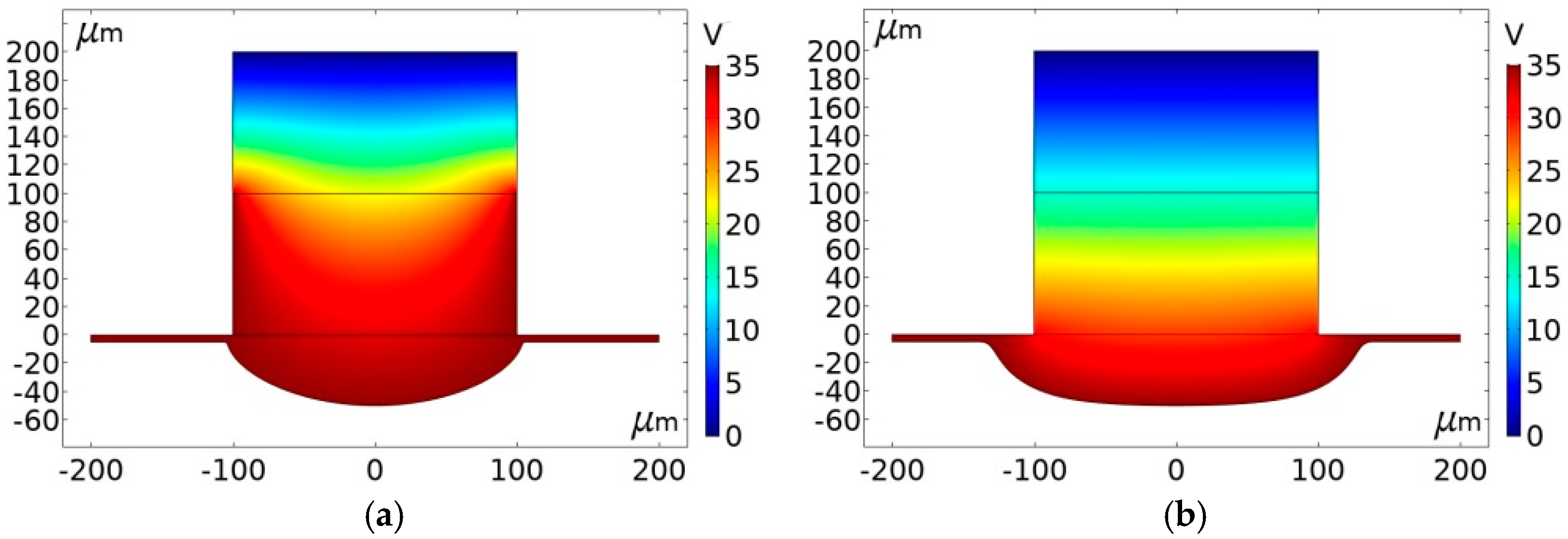
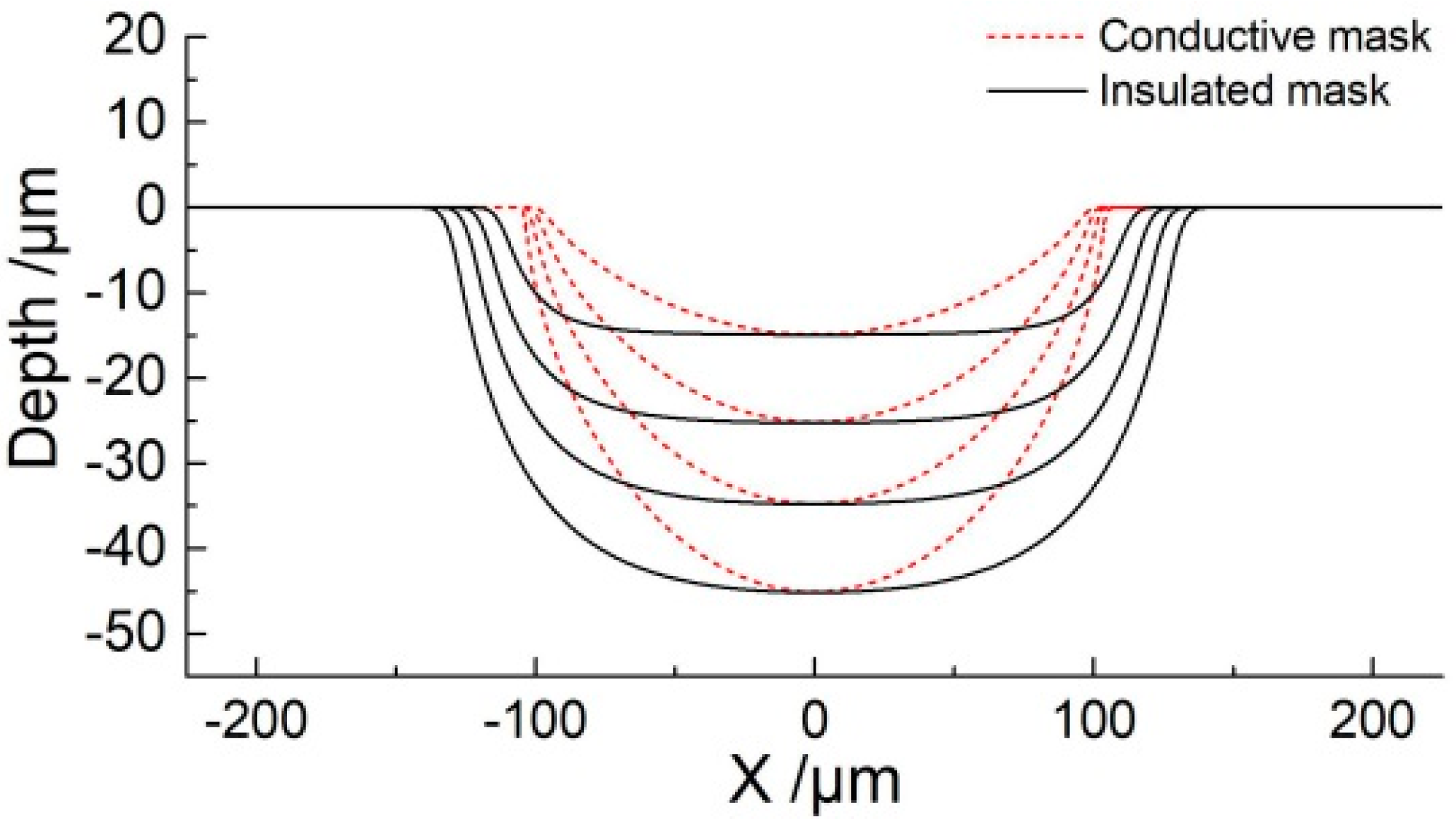
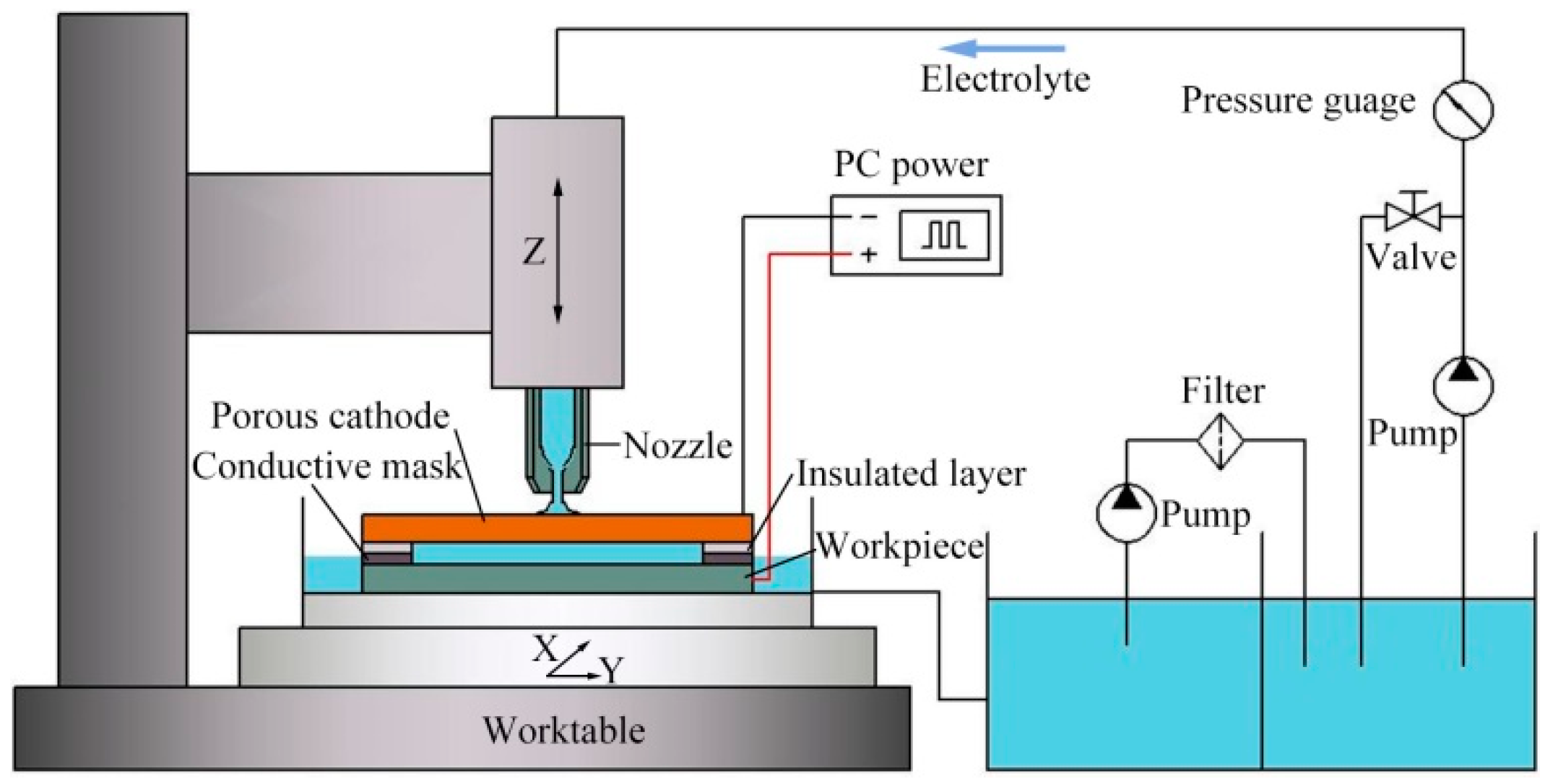
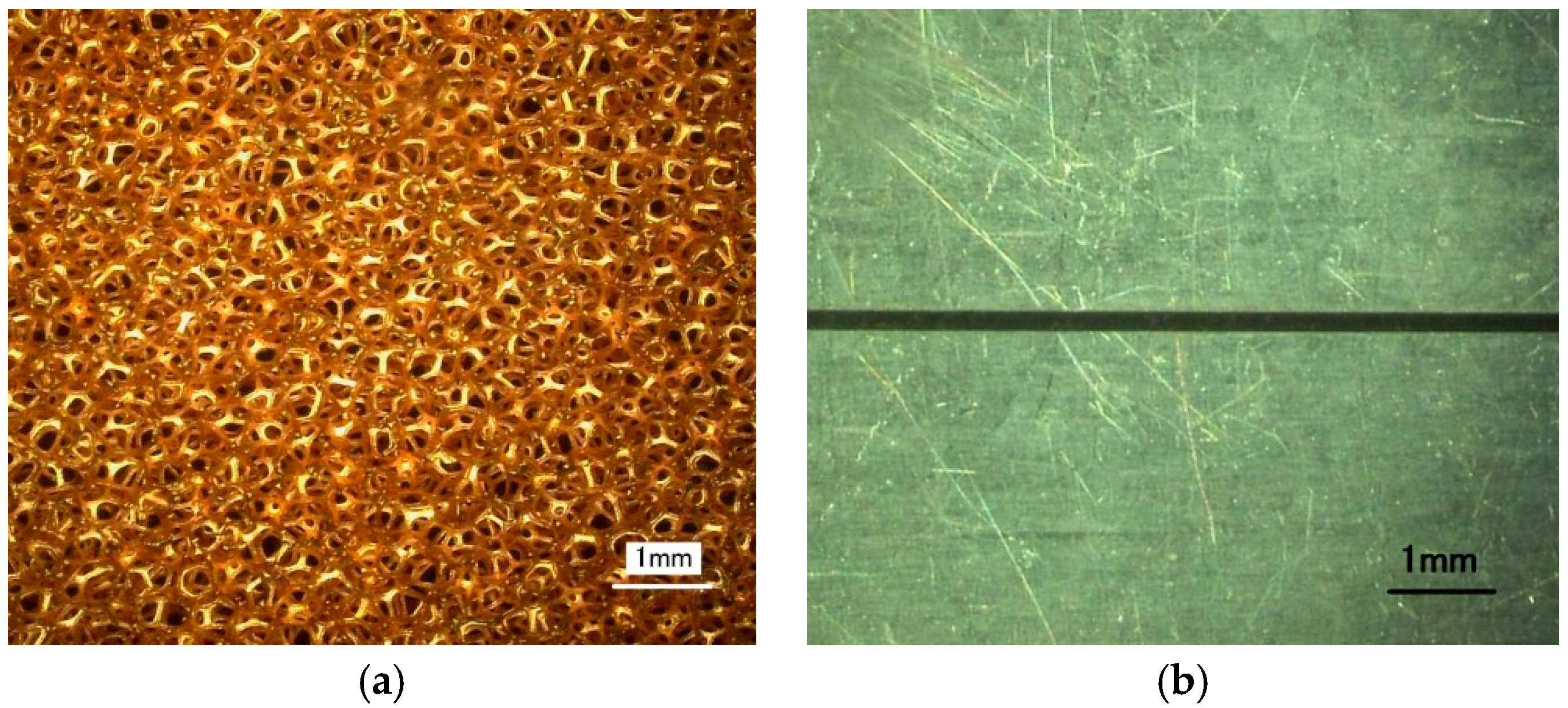

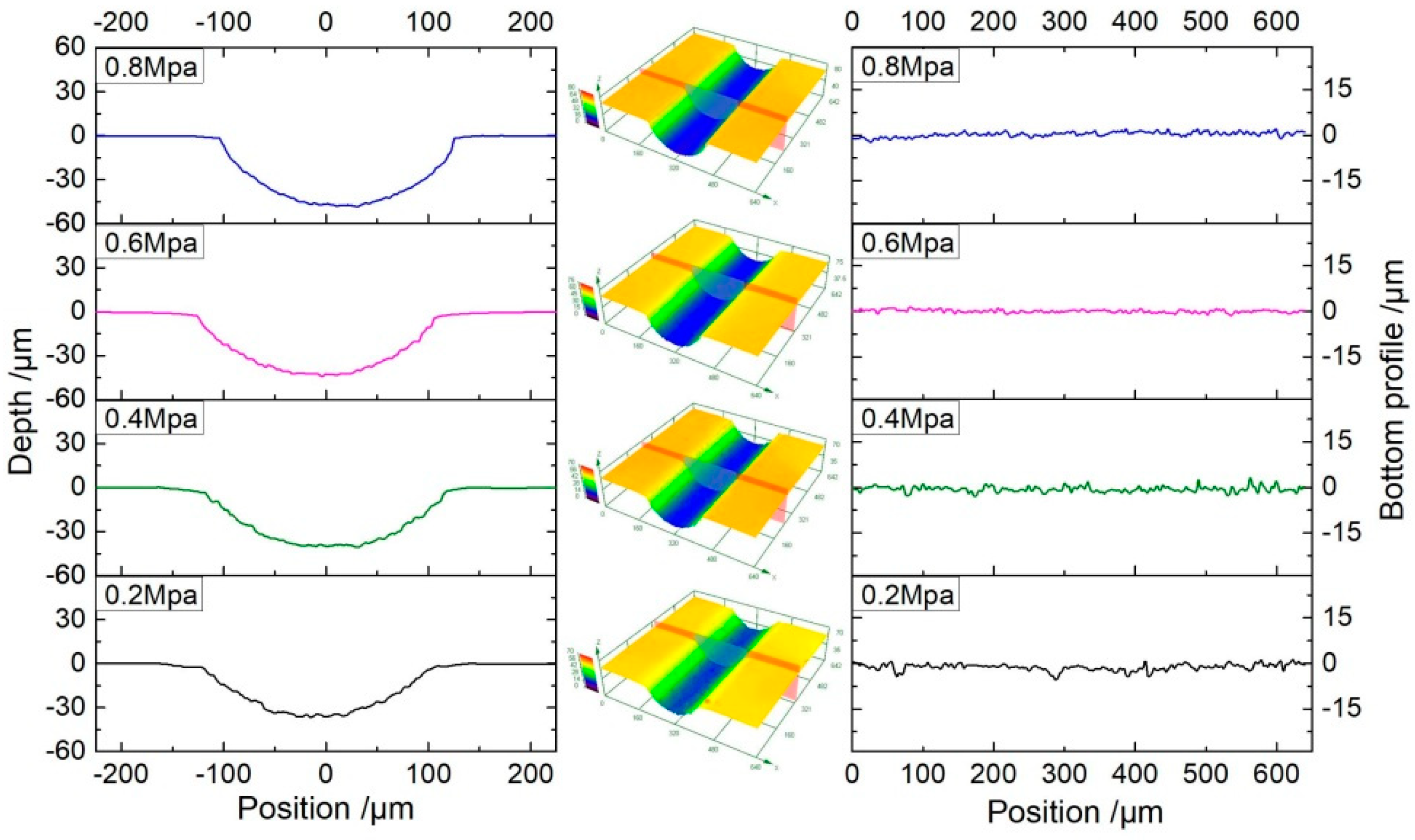
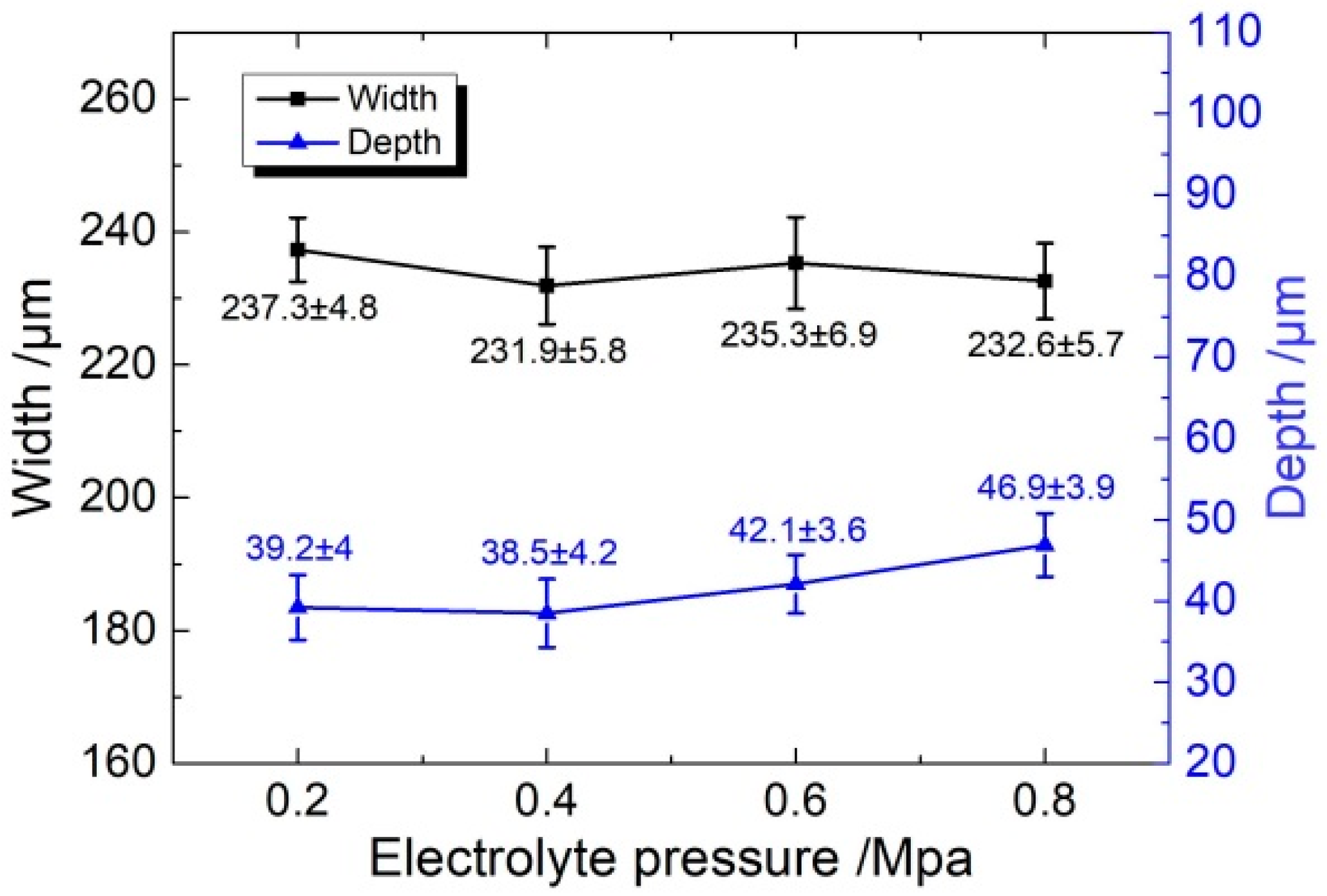
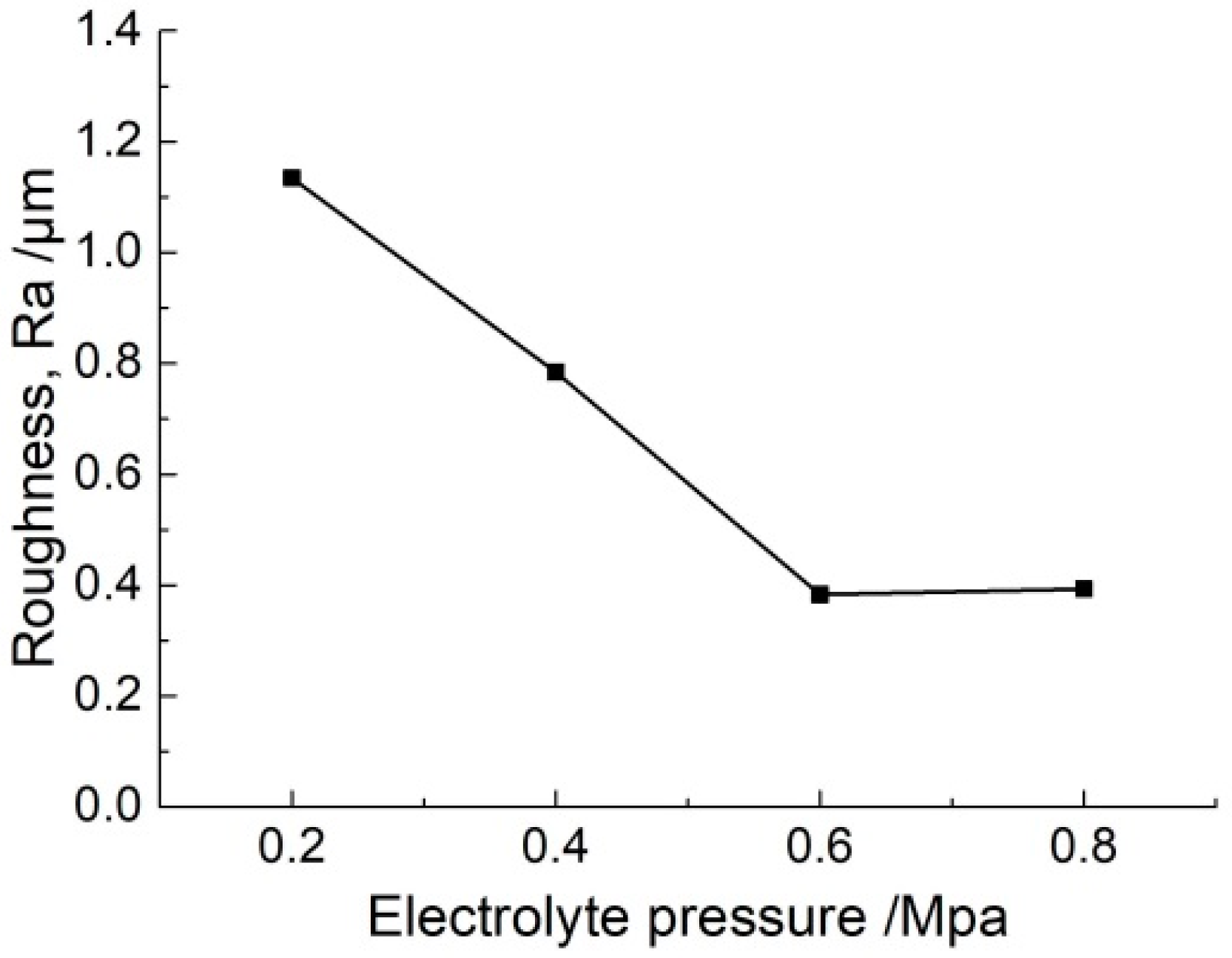

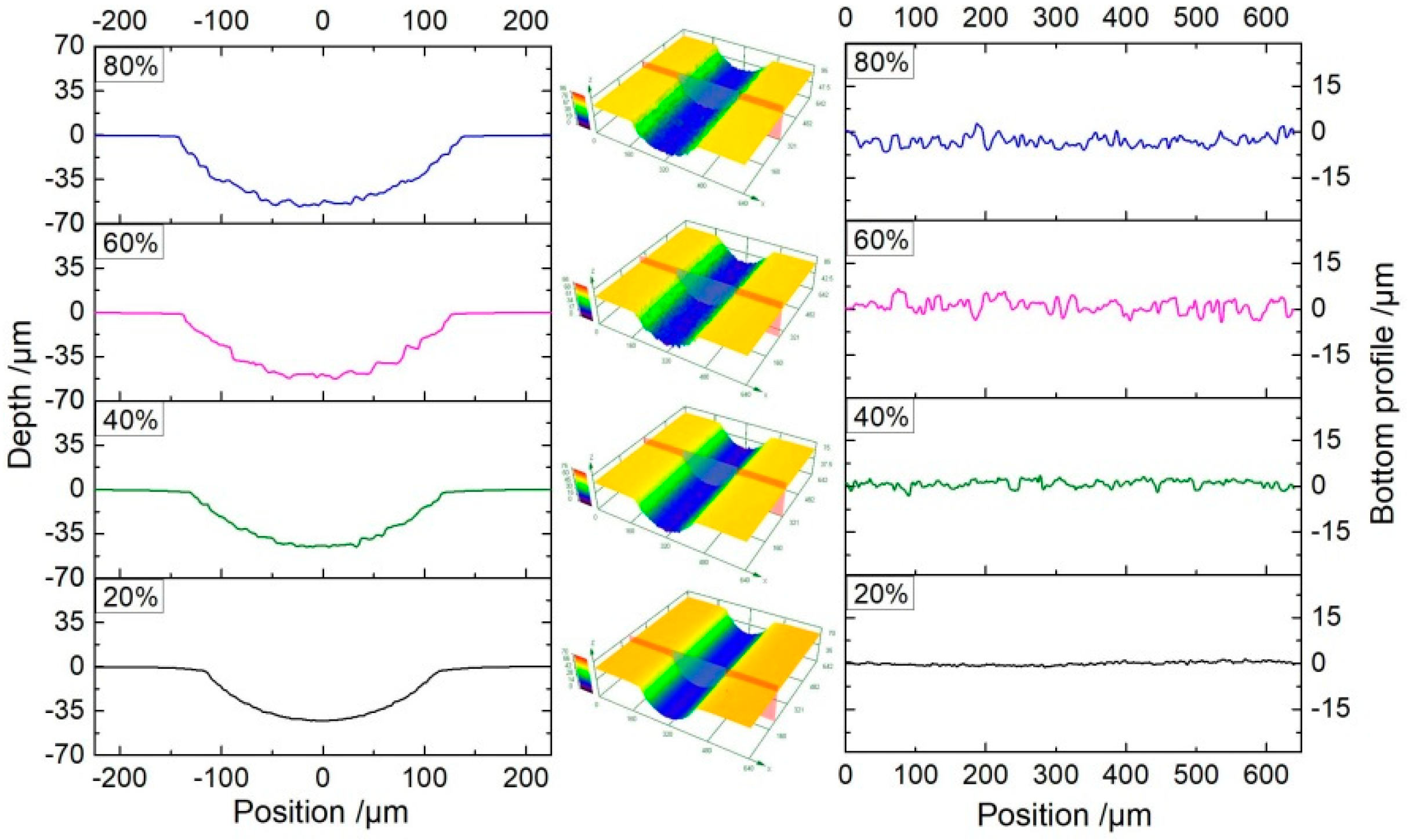

| Parameters | Value |
|---|---|
| Thickness of the insulated layer, H1 | 100 μm |
| Thickness of the mask, H2 | 100 μm |
| Width of the micro-slot, W | 200 μm |
| Electrolyte conductivity, σ | 12 S/m |
| Volumetric electrochemical equivalent, ω | 0.035 mm3/(A·s) |
| Electric potential, U | 35 V |
| Parameters | Value |
|---|---|
| Electrolyte concentration | 12% (wt %), NaNO3 |
| Electrolyte temperature, T | 25 °C |
| Inner diameter of nozzle, d | 2 mm |
| Electrolyte pressure, Pin | 0.2, 0.4, 0.6, 0.8 MPa |
| Thickness of the porous cathode, T1 | 3 mm |
| Porosity of the porous cathode, εp | 0.95 |
| Thickness of the insulated layer, T2 | 100 μm |
| Thickness of the conductive mask, T3 | 100 μm |
| Length of the micro-slit, L | 20 mm |
| Width of the micro-slit, W | 200 μm |
| Reciprocating motion number of the nozzle, N | 1 |
| Applied voltage with the insulated mask, U1 | 10 V |
| Applied voltage with the conductive mask, U2 | 35 V |
| Pulse duty cycle, ε | 20%, 40%, 60%, 80% |
| Pulse frequency, f | 1 kHz |
| Machining time with the insulated mask (ton), t1 | 10 s |
| Machining time with the conductive mask (ton), t2 | 20 s |
| Workpiece material | Stainless steel 304 |
| Metallic nozzle material | Stainless steel 304 |
© 2020 by the authors. Licensee MDPI, Basel, Switzerland. This article is an open access article distributed under the terms and conditions of the Creative Commons Attribution (CC BY) license (http://creativecommons.org/licenses/by/4.0/).
Share and Cite
Fan, G.; Chen, X.; Saxena, K.K.; Liu, J.; Guo, Z. Jet Electrochemical Micromachining of Micro-Grooves with Conductive-Masked Porous Cathode. Micromachines 2020, 11, 557. https://doi.org/10.3390/mi11060557
Fan G, Chen X, Saxena KK, Liu J, Guo Z. Jet Electrochemical Micromachining of Micro-Grooves with Conductive-Masked Porous Cathode. Micromachines. 2020; 11(6):557. https://doi.org/10.3390/mi11060557
Chicago/Turabian StyleFan, Guochao, Xiaolei Chen, Krishna Kumar Saxena, Jiangwen Liu, and Zhongning Guo. 2020. "Jet Electrochemical Micromachining of Micro-Grooves with Conductive-Masked Porous Cathode" Micromachines 11, no. 6: 557. https://doi.org/10.3390/mi11060557
APA StyleFan, G., Chen, X., Saxena, K. K., Liu, J., & Guo, Z. (2020). Jet Electrochemical Micromachining of Micro-Grooves with Conductive-Masked Porous Cathode. Micromachines, 11(6), 557. https://doi.org/10.3390/mi11060557





